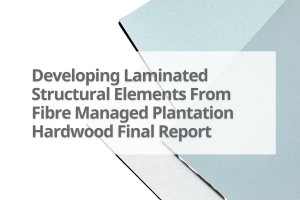This project utilised Marker-assisted selection (MAS) to identify and validate new genetic markers for wood density, along with using previously-discovered markers for growth and pulp yield. The researchers tested the DNA and commercial attributes of parent trees (Globulus and Nitens), and then analysed the DNA of the offspring to predict the parent’s commercial attributes. The results proved to be highly accurate with excellent correlation. The researchers developed a world-leading genetic DNA testing system that predicts key commercial attributes of adult eucalyptus trees from a single seedling leaf. Additionally, the new method has also provided for cheaper, faster genetic MAS testing increasing daily capability from 200 to over a thousand samples.
These markers will then be used to screen current industry seed orchards to enable immediate improvement of deployment seed and the removal of inferior genotypes. It is expected that elite genotypes identified in these screens could be used in next generation MAS-selected clonal seed orchards and as parents in future crosses.
MAS is expected to dramatically accelerate breeding programs by enabling selection of desirable genotypes as seedlings, thus dramatically shortening the breeding cycle. It also enables breeders to increase their selection intensity by screening large numbers of trees to identify better parental genotypes for crossing and superior genotypes arising from crosses.
The research will increase the commercial value of Australia’s hardwood plantations and the wood produced by identifying markers for the high value density traits and by revealing elite trees (for growth, density and KPY) in seed production orchards. This will allow plantation managers to immediately begin deploying trees in plantations with significantly higher commercial value. Traditional breeding cycles are typically a decade or more, but modelling suggests the time can be halved with the new system and the genetic gains per year doubled or trebled.
Project number: PNC378-1516



